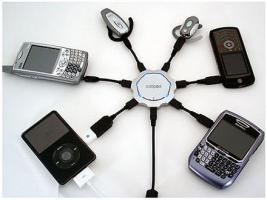
I recently read an article about the wasted energy resulting from charging electrical and electronic devices beyond the point where they have fully charged. The article used a play on words to call attention to this waste.
In this age of modern technology, more and more devices rely on electricity to function. Gadgets like cell phones, laptops, MP3 players, tablets and lately, cars, are plugged every day to have their batteries recharged. Most of the time, we allot recharging time whenever we sleep so we can make sure that these batteries are fully charged. But what we don’t always realize is by doing this, we consume much more energy than needed.
Lawrence Berkley National Library has conducted a study regarding the wasted energy that these devices use. The study revealed that an average cell phone left overnight for charging for 8 more hours would consume of about 0.02 extra kilowatt hours (KWH) of energy.
Doesn’t sound like much, but when done every night for a year, it adds up to about 8 KWH per device (computers eat up much more).
There’s more: Every time you leave electronics around your house plugged in but not in use – whether it’s your TV, video game systems, minor appliances, etc. – you’re inviting energy zombies into your home to have a delicious meal at your expense, which could eventually leave you with a high electricity bill and an empty wallet.
One easy solution is to plug several devices into multi-outlet strips with on-off switches, so you can shut them all off at once.
Just in case, like me, you forgot what exactly a ”joule” is:
The joule is a unit of work or energy in the International System of Units … the joule equals one watt-second-i.e., the energy released in one second by a load of one watt (a current of one ampere through a resistance of one ohm.)
It is named after the English physicist James Prescott Joule (1818–1889)
1 joule or watt-second = 2.7778×10−7 kilowatt-hour (not very much).
One joule in everyday life represents approximately:
- the energy required to lift a small apple (weighing approximately 3.5 oz.) vertically three feet.
- the energy released when that same apple falls to the ground.
- the energy required to lift one pound
vertically nine inches (3/4 of a foot-pound).
- the heat required to raise the temperature of 1 oz. of water by 0.015º F
- the typical energy released as heat by a person at rest, every 1/60th of a second.
- the kinetic energy of a 100 lb. human
moving very slowly
1 kilowatt-hour (KWH) is 1000 watts times 60 seconds times 60 minutes (3600 seconds), or 3.6 megajoules or 3,600,000 joules.
It’s about what it takes to bake a cake or wash a load of clothes.
A megajoule (MJ) is equal to one million (106) joules, or approximately the kinetic energy of a 2000 pound car moving at 100 mph.
A KWH is approximately the kinetic energy of a 3 ½ ton truck moving at 100 mph
And finally, a yottajoule (YJ) is equal to one septillion (1024) joules. This is approximately the amount of energy required to heat the entire volume of water on Earth by 1 °Celsius. (a yottajoule is a lotta joules). Think global warming.


Any inventors out there?
It seems to me that someone with computer/electrical engineering knowledge out there should be able to invent a charging unit that automatically shuts itself off when a device is just about fully charged (I think I read that it is not good for the battery to totally charge to its absolute fullest potential) and stops drawing electricity.
As for shutting everything off when not in use, if my computer didn’t lose its settings when I shut it down, I would do that. Unplugging everything together might not work for me, but again, if devices could be designed not to draw power when not needed, we’d solve the problem that way.
Any clever inventors available? I would think any energy efficiency group out there would be very supportive of efforts to address these situations.
Sleep mode
In case you haven’t tried this, when your computer is not in use, from your Start icon in the lower left screen you can select “Sleep” that puts your computer into a low-power state, without having to do a shut-down. When you’re ready to resume, just tap your space bar a couple of times (or any key, or move the mouse).
yes, thanks
I do use sleep, but still, would love to cut power use ideally to zero when I am not using various electronics. For example, my original Apple printer (way back in the “good ol’ days”) did shut off automatically if not used within 20 minutes or so, and automatically turned itself on when I hit print, and I wonder why printers don’t do that anymore? It really seems to me like there should be an easy fix to these issues.
Problem solved?
Actually, chargers exist that reduce the charging current to a mere trickle when the batteries are full. These are very cleverly named “Trickle Chargers”.
However, not all the chargers that come with the devices employ this technology.
More math
If one joule is the energy released as heat by a person at rest every 1/60th of a second, = 60 joule every second, x 60 = 3600 joules per minute, x 60 = 216,000 joules per hour
1 kilowatt-hour (KWH) is 1000 watts times 60 seconds times 60 minutes or 3,600,000 joules.
so, in16.7 hours, we emit a KWH of heat energy or a little less than 1 ½ KWH per day
So, the question is…how can we harness this energy?
visions of "The Matrix" come
visions of “The Matrix” come to mind…